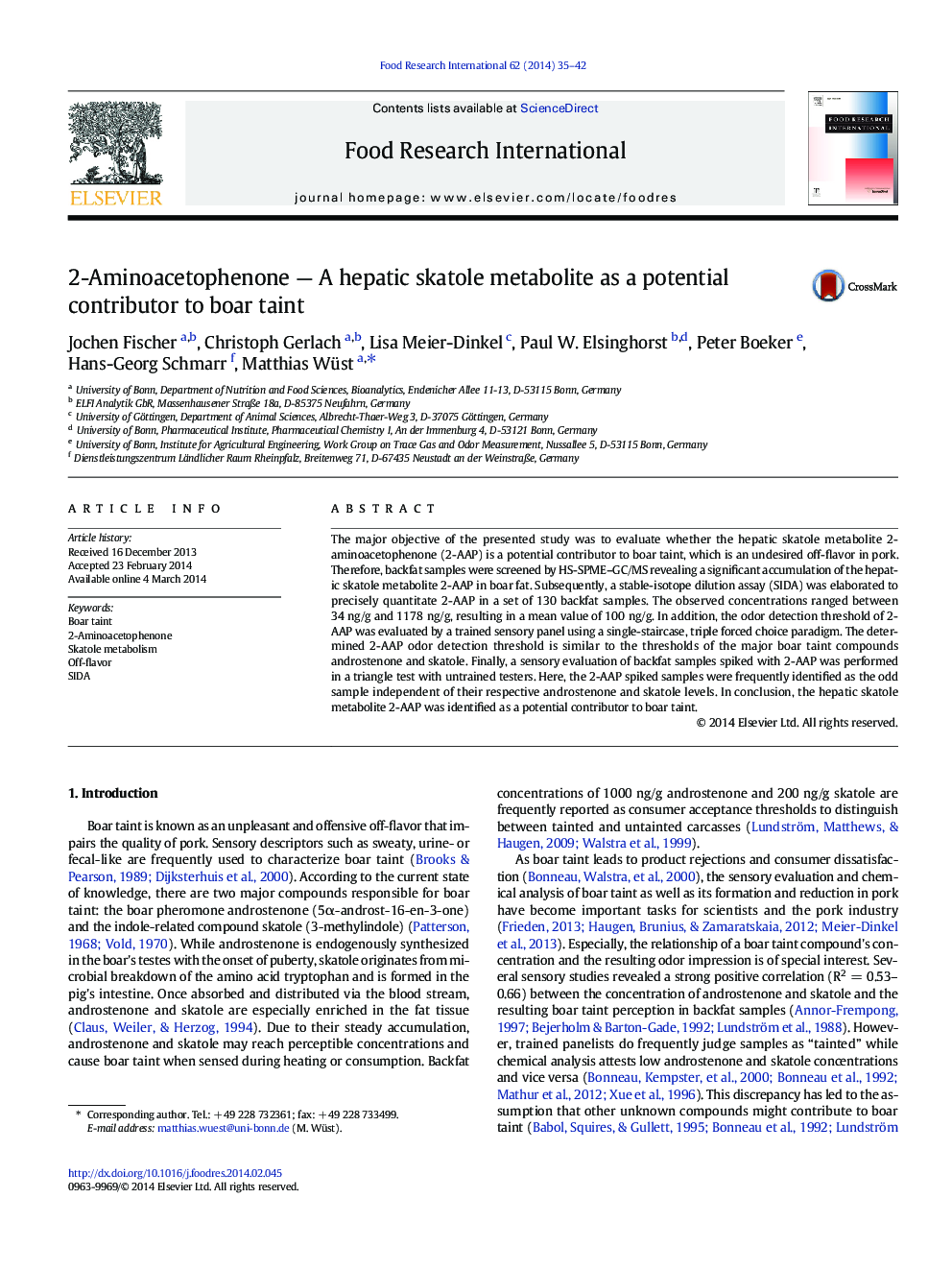| Article ID | Journal | Published Year | Pages | File Type |
|---|---|---|---|---|
| 6395740 | Food Research International | 2014 | 8 Pages |
â¢2-Aminoacetophenone (2-AAP) was identified as potential contributor to boar taint.â¢GC/MS analysis reveals significant accumulation of 2-AAP in back fat.â¢Odor threshold of 2-AAP is comparable to the androstenone/skatole threshold.â¢2-AAP spiked back fat samples are determined as the odd sample in triangle tests.
The major objective of the presented study was to evaluate whether the hepatic skatole metabolite 2-aminoacetophenone (2-AAP) is a potential contributor to boar taint, which is an undesired off-flavor in pork. Therefore, backfat samples were screened by HS-SPME-GC/MS revealing a significant accumulation of the hepatic skatole metabolite 2-AAP in boar fat. Subsequently, a stable-isotope dilution assay (SIDA) was elaborated to precisely quantitate 2-AAP in a set of 130 backfat samples. The observed concentrations ranged between 34Â ng/g and 1178Â ng/g, resulting in a mean value of 100Â ng/g. In addition, the odor detection threshold of 2-AAP was evaluated by a trained sensory panel using a single-staircase, triple forced choice paradigm. The determined 2-AAP odor detection threshold is similar to the thresholds of the major boar taint compounds androstenone and skatole. Finally, a sensory evaluation of backfat samples spiked with 2-AAP was performed in a triangle test with untrained testers. Here, the 2-AAP spiked samples were frequently identified as the odd sample independent of their respective androstenone and skatole levels. In conclusion, the hepatic skatole metabolite 2-AAP was identified as a potential contributor to boar taint.
